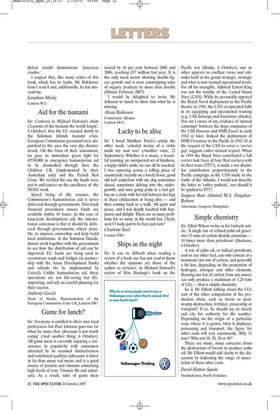Ships in the night
Sir: It can be difficult when reading a review of a book one has not read to know whether the opinions are those of the author or reviewer. In Michael Howard's review of Max Hastings's book on the Pacific war (Books, 6 October), one or other appears to conflate views and attitudes held at the grand strategic, strategic and what is now termed operational levels. For all his strengths, Admiral Ernest King was not the totality of the United States Navy (USN). While he personally opposed the Royal Naval deployment to the Pacific theatre in 1944, the USN co-operated fully in its equipping and operational training (e.g. USS Saratoga and Sourabaya attacks). Nor am I aware of any evidence of 'mutual contempt' between the ships companies of the USS Houston and HMS Exeter in early 1942 or later. Indeed the deployment of HMS Victorious to the Pacific in 1942-43 at the request of the USN to cover a 'carrier gap' suggests rather mutual respect. When in 1944 the Royal Navy contributed a full carrier task force of four fleet carriers with its fleet train (TF57), it made a not dissimilar contribution proportionately to the Pacific campaign as the USN made to the battle of the Atlantic. I would not describe the latter as 'rather pathetic', nor should it be applied to TF57.
Surgeon Rear Admiral MA. Farquhar- Roberts Alverstoke, Gosport, Hampshire







































































 Previous page
Previous page